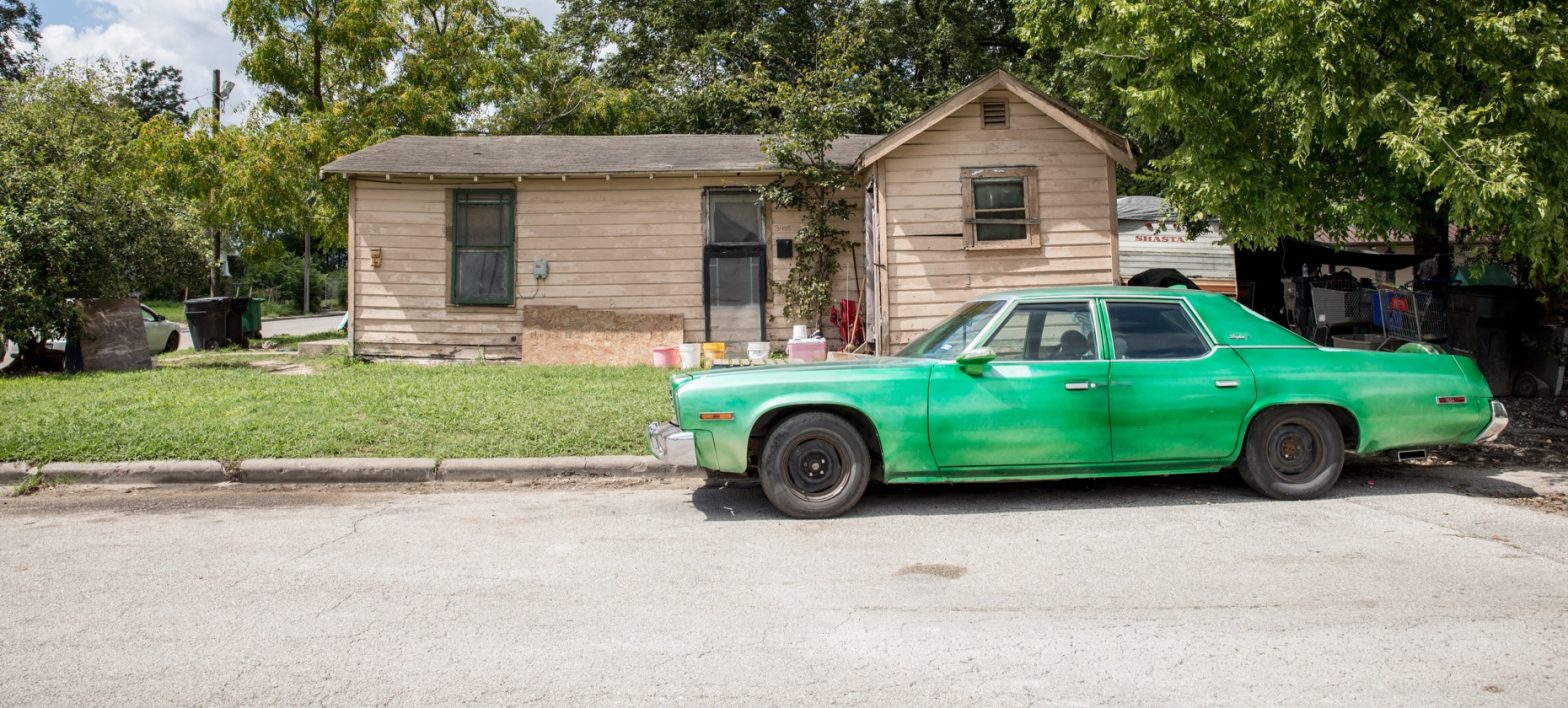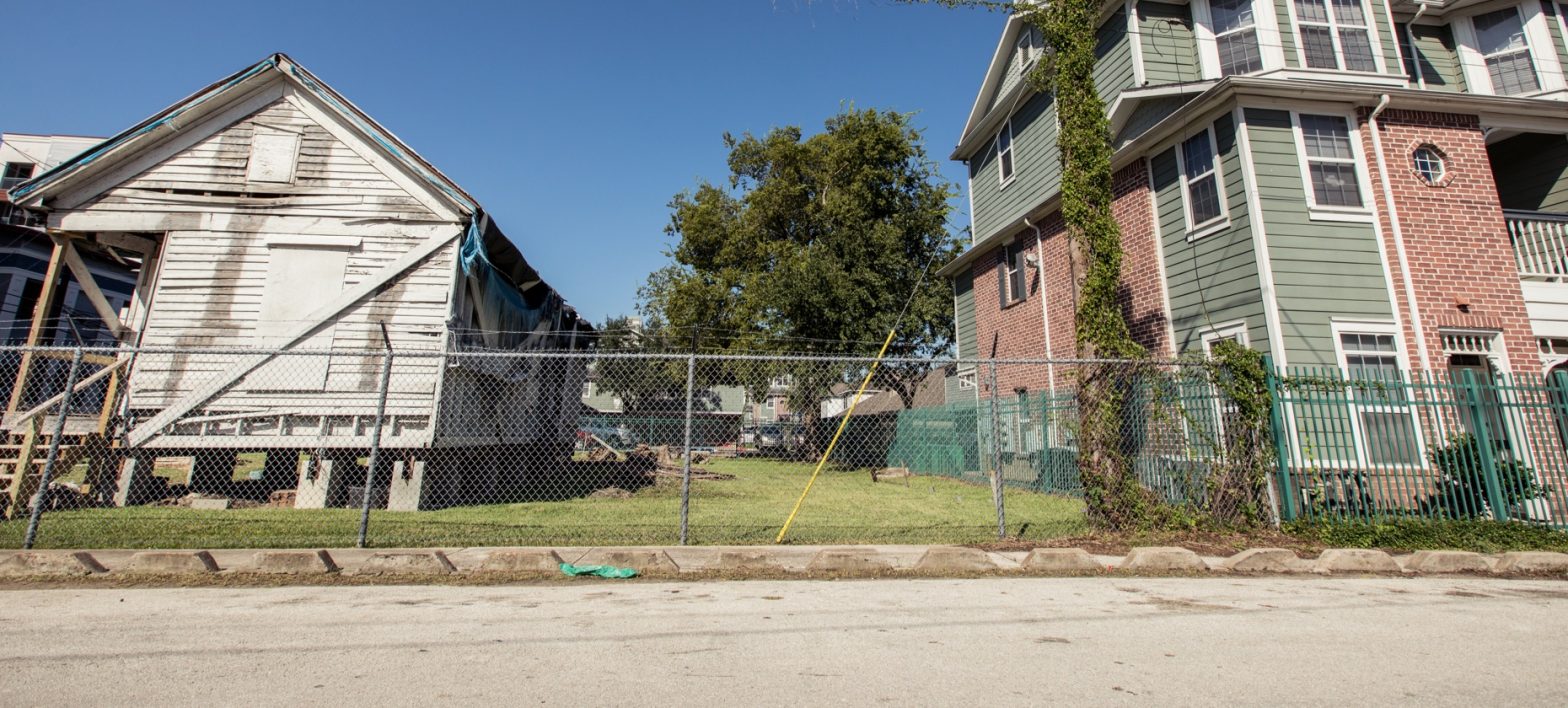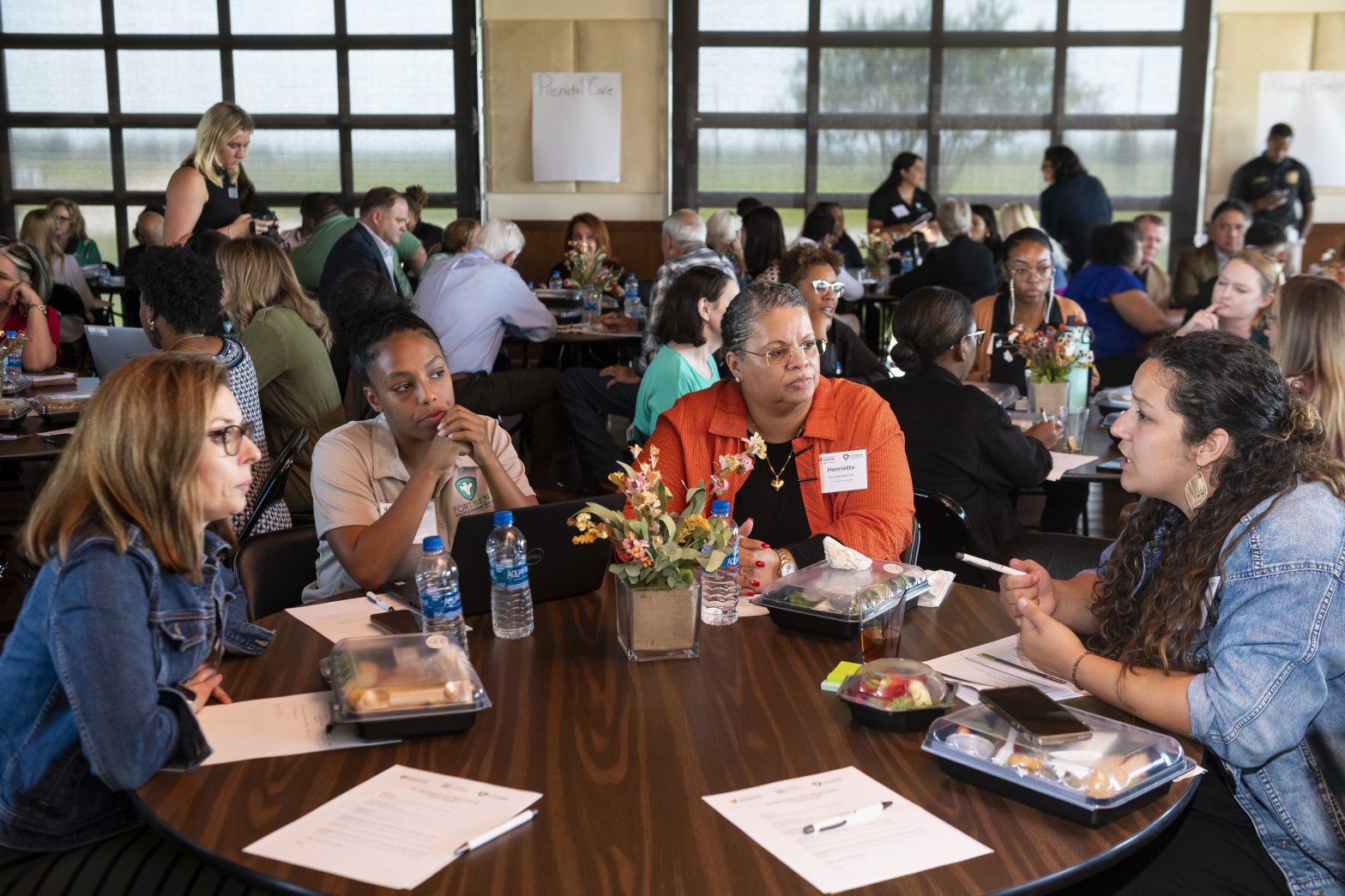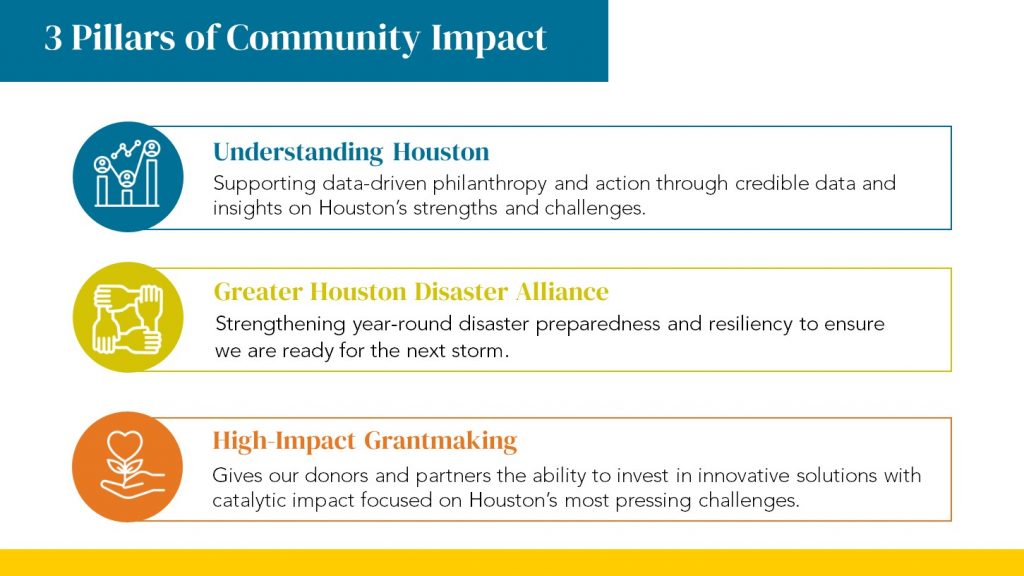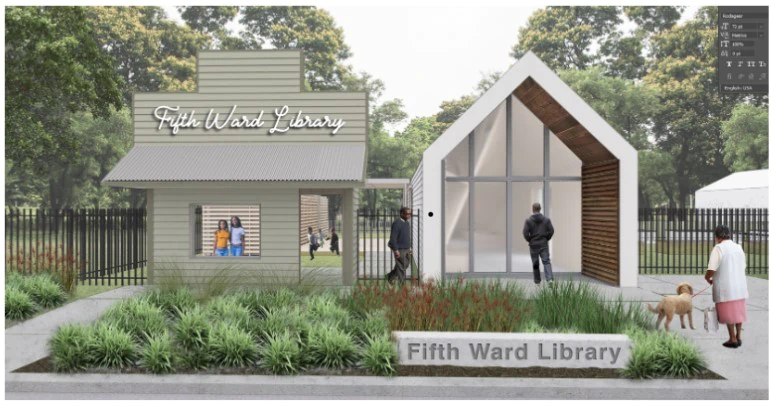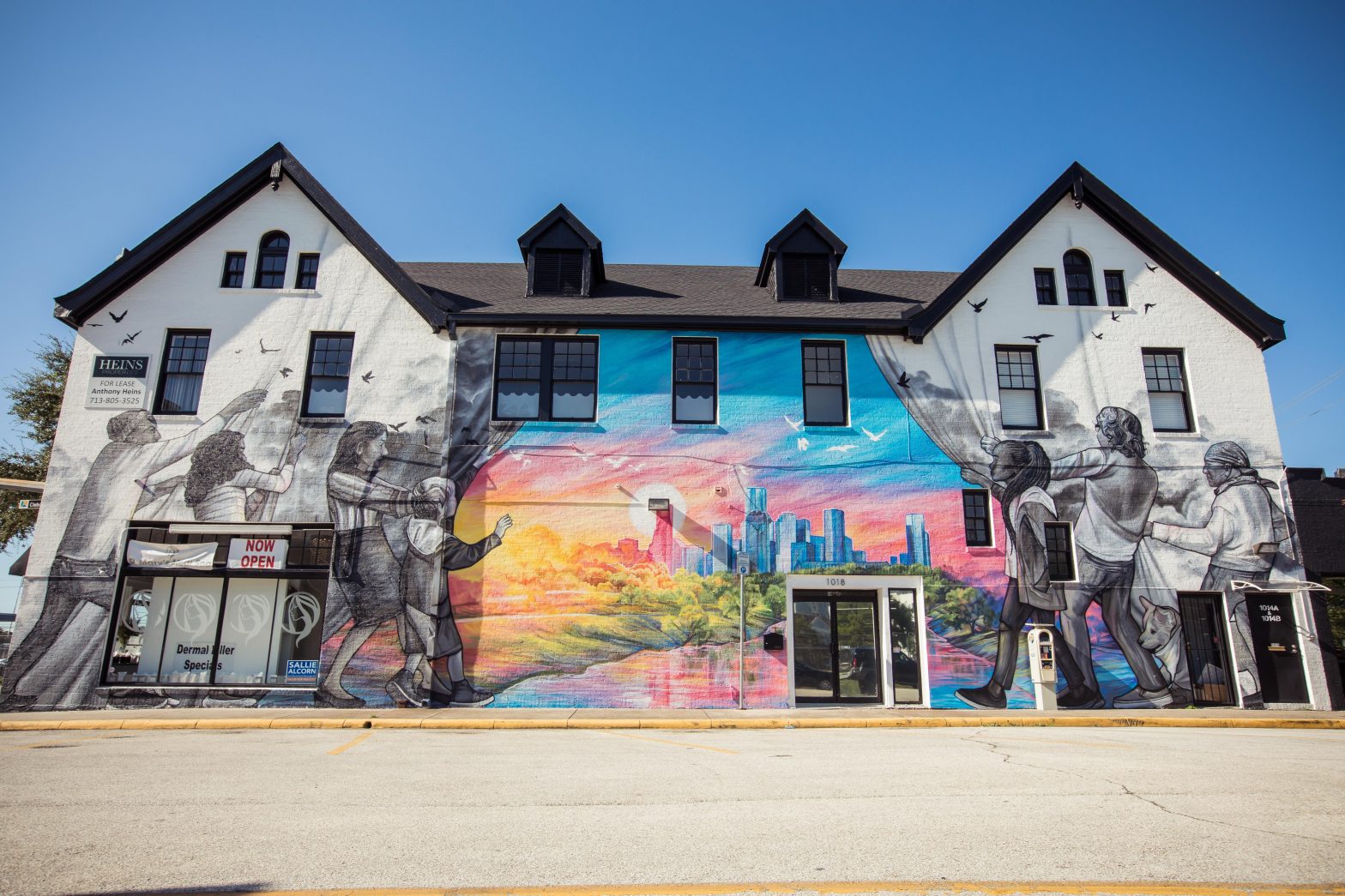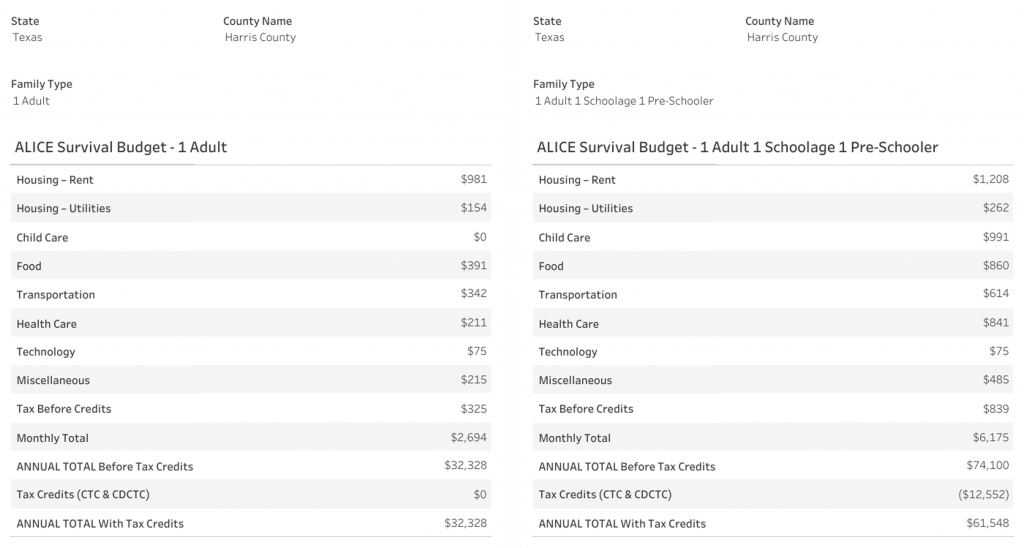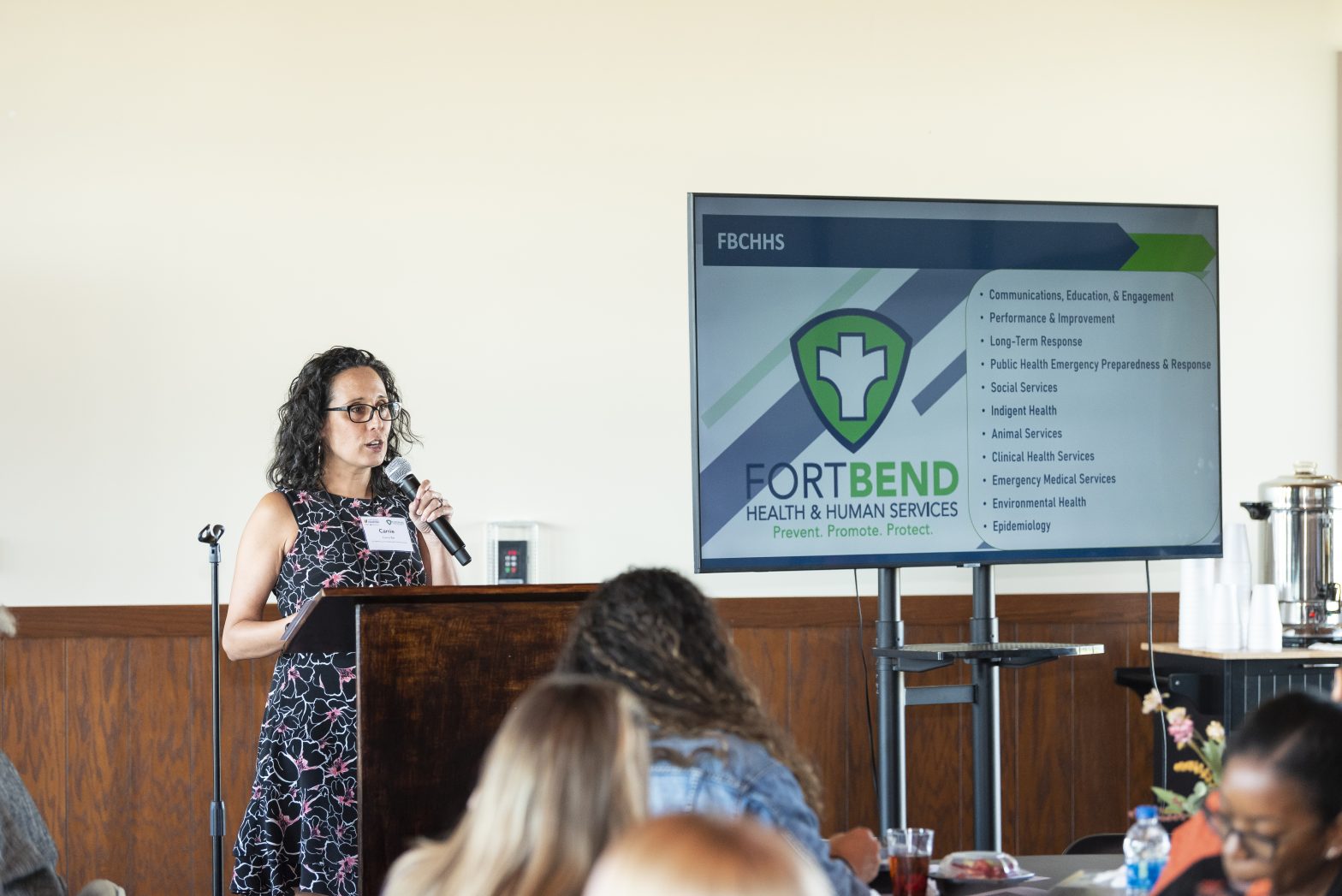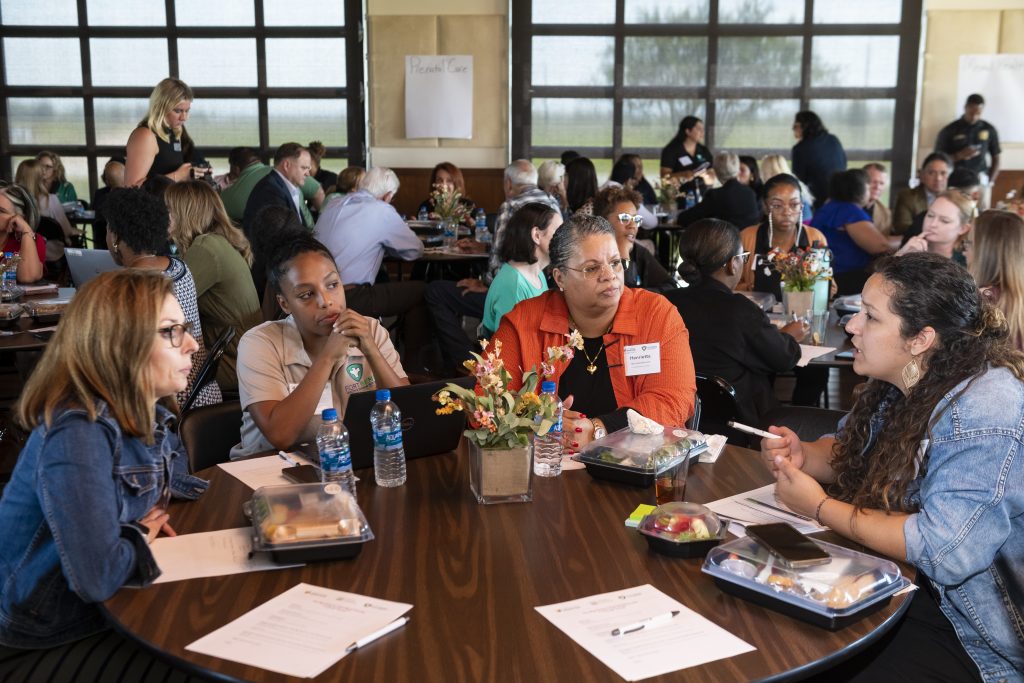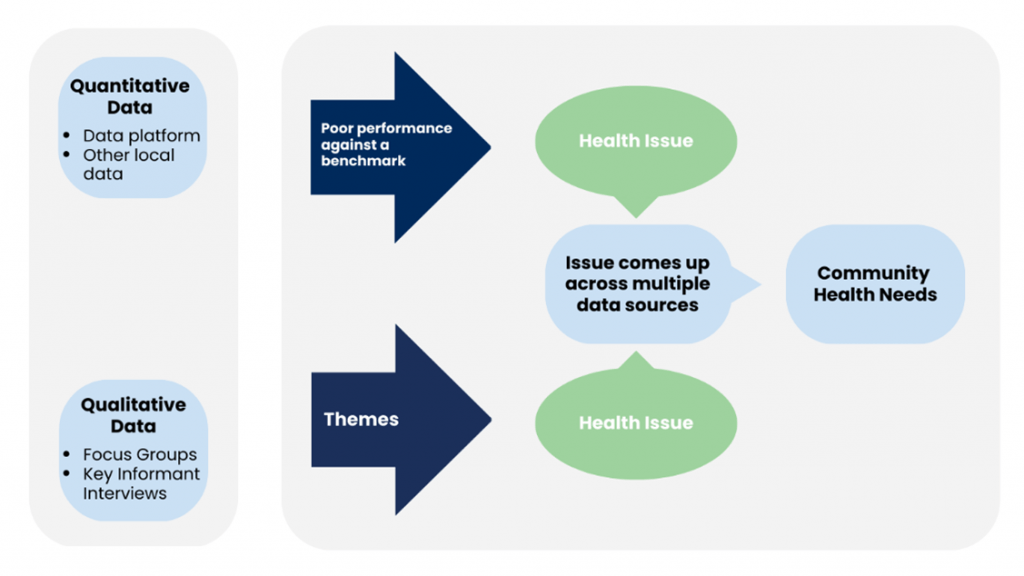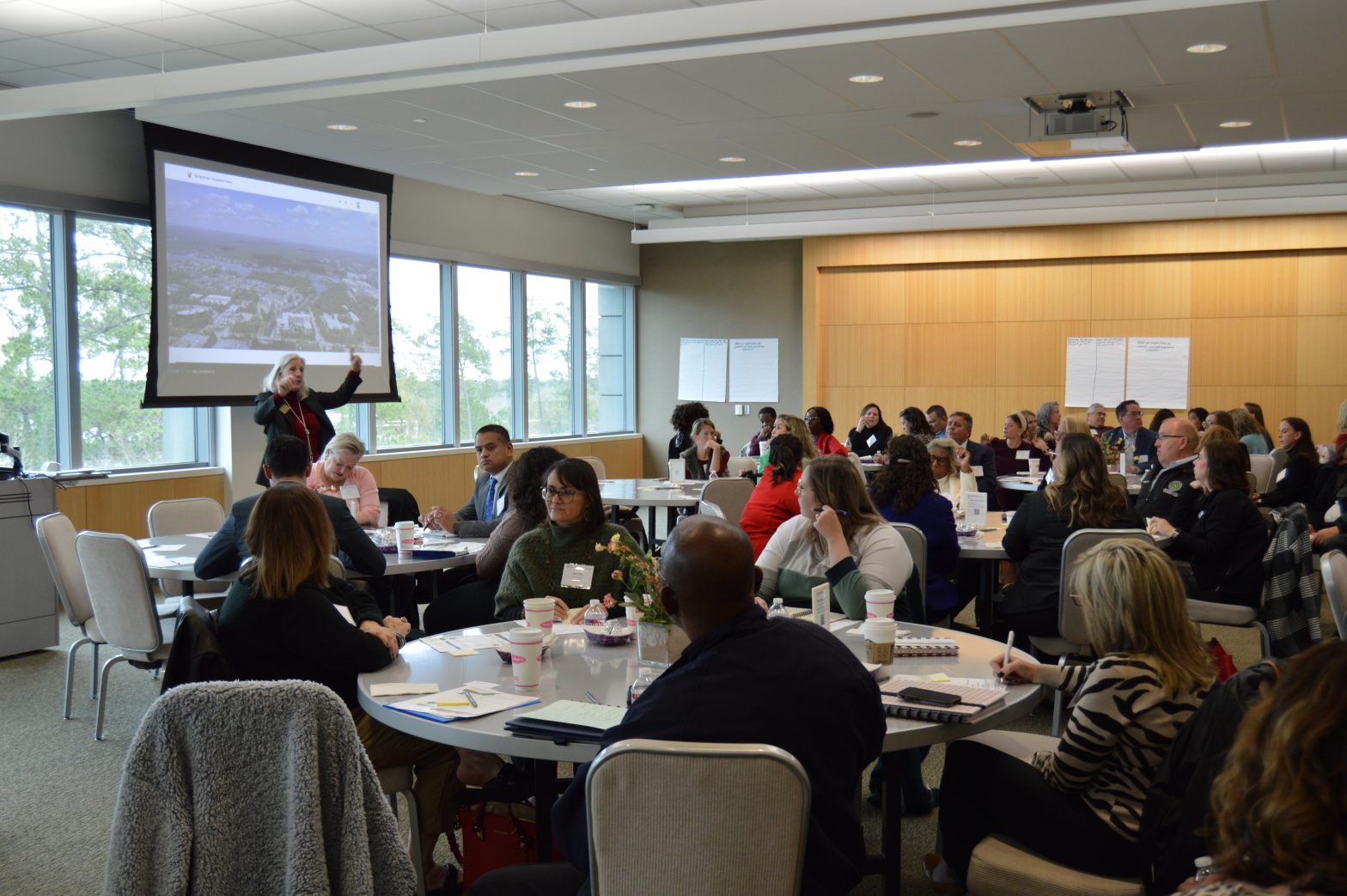Poverty is more than just a statistic. It is a daily struggle that impacts millions of Americans, shaping futures before they even begin. In Harris County, where poverty rates exceed the national average, nearly one in four children grow up in a household facing extreme financial hardships. And the stress of poverty has far-reaching consequences not just affecting the present but also long-term outcomes in limited educational opportunities, job prospects, and overall health for generations.
Accessing public benefits can play a vital role in bridging the gap between struggle and stability. Programs like the Supplemental Nutrition Assistance Program and housing assistance have lifted millions out of poverty and provide the financial stability required for families to invest in opportunities that improve future outcomes. However, in Harris County alone, it is estimated that $1 billion in government benefit assistance goes unclaimed each year due to a lack of awareness, stigma, and complex application processes, leaving those in need without access.
Connective, a Houston-based nonprofit, is working with partners across Harris County to provide a solution to the underutilization of public benefits by creating a local Public Benefits Hub that serves as a one-stop shop concept designed to simplify the process of accessing public benefits.
Reducing poverty is not just a matter of improving the lives of affected individuals; it has profound benefits for our communities as a whole. When we invest in programs and policies that lift families out of poverty, the rewards echo throughout society. Lower poverty rates are linked to better community health, higher graduation rates, reduced crime, and improved infrastructure—all essential elements for fostering long-term growth and success for everyone.
The scope and impacts of poverty
Across the United States, 1 out of 8 Americans live in poverty. Harris County’s 2023 (most recent data available) poverty rate (16.0%) exceeded the national rate (12.5%), continuing a trend since 1990. Children are more likely to live in poverty, with 23% of children under the age of 18 living below the poverty threshold in Harris County.
Poverty contributes to chronic stress that not only impacts adults but can also have generational impacts on children, who make up the largest group in the U.S. experiencing poverty. Due to extended exposure to hazardous living conditions or extreme financial problems, living in poverty can lead to physical, mental, and financial strain. The oppressive phenomena known as “poverty-related stress” is the result of these everyday stressors.
Children who grow up in poverty are more likely to experience poverty as adults, have higher rates of ill health, lower educational attainment, lower labor force participation due to having less social capital and professional opportunities, and have greater exposures to violence. They are also two to three times more likely to develop mental health conditions.
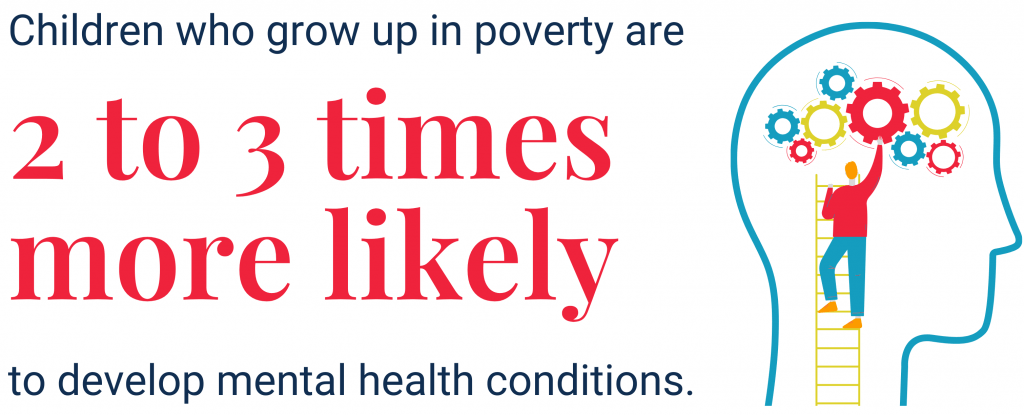
The impacts of public benefits on poverty
Public benefits—government programs that offer financial assistance to help people meet their basic needs like food, housing, and healthcare—serve as a safety net to millions of Americans who are struggling financially. These benefits including programs like SNAP (Supplemental Nutrition Assistance Program), housing vouchers, or TANF (Temporary Assistance for Needy Families). (See Appendix A for a list of the types of public benefits that exist). One of the first official public benefit programs was the Social Security Act of 1935 which eventually brought millions of older adults out of poverty.
Due to unprecedented economic challenges caused by the COVID-19 pandemic, the United States expanded several public benefit programs in 2020 and 2021 to mitigate financial hardships. During this time, the national poverty rate fell to its lowest level on record, with overall poverty rates declining to 7.8% in 2021 and child poverty dropping to 5.2%, thanks to increased benefits and greater flexibility in assistance programs during the pandemic. However, poverty rates rose in 2022 by 4.6 points up to 12.4% in just a single year due to the termination of pandemic-related assistance.
To put this into perspective, the number of Americans living in poverty increased by more than 15 million between 2021 and 2022 and the number of children more than doubled to 9 million.
To understand the role these expanded government benefits had in reducing the poverty level, we can compare poverty levels before and after people receive government assistance such as unemployment insurance, housing assistance, SNAP, WIC, etc.
Before any taxes or benefits are factored in, the number of people living in poverty across the U.S. increased in 2020 and 2021 compared to 2019. However, taking into consideration government support like the expanded Child Tax Credit and stimulus payments, the number of individuals living in poverty decreased consistently between 2019 and 2021, with over 12.5 million fewer people living in poverty in 2021 compared to 2019.
While public assistance offers notable advantages, it also comes with perceived drawbacks. One common concern is that these programs may act as a disincentive to employment. A key examples is the “benefits cliff”—a situation where an increase in earnings pushes an individual or family above the eligibility for threshold for public benefits. As a result, people may lose access to critical support just when their income rises, even if they continue to struggle financially. This creates a challenge, as some individuals may hesitate to accept job offers or pay raises, knowing that doing so could leave them with less income overall.
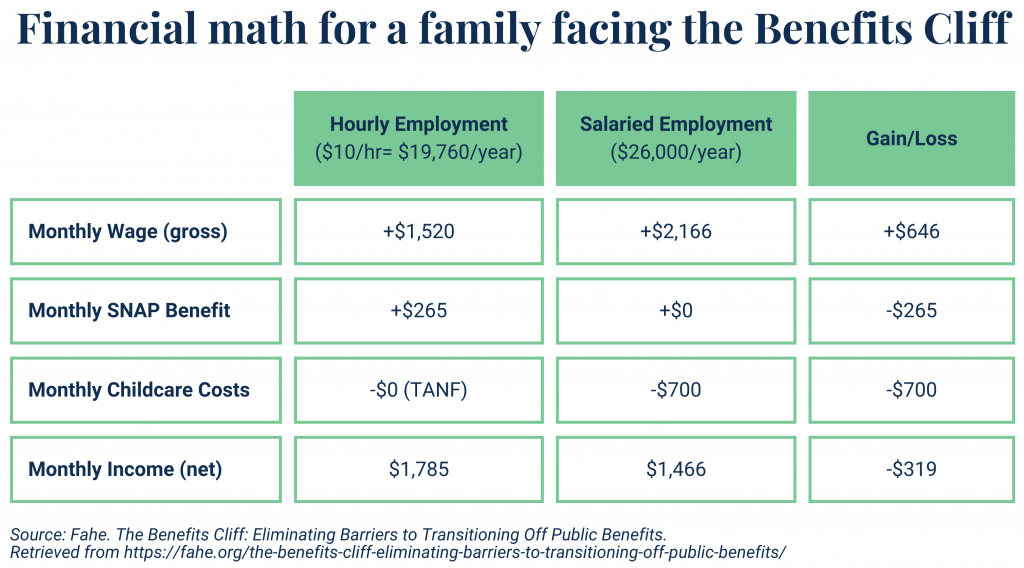
This benefits cliff, or gap, doesn’t negate the impact of these programs on providing financial security and reducing poverty but rather highlights how the programs are structured that can create barriers to economic mobility. Issues like inconsistent eligibility rules, benefits that disqualify recipients from other forms of aid due to income threshold, and the lack of a gradual phase-out system rather than a cliff can make it difficult for individuals to transition off assistance without experiencing financial hardship. Recommendations to address the benefits cliff include temporarily extending benefits after income increases, gradually reducing assistance preventing a sudden loss of wages, standardizing eligibility requirements to reduce confusion and unintended loss of benefits, and raising or eliminating asset limits to encourage savings without jeopardizing benefit eligibility.
Public benefits can help stabilize individuals and families by providing basic needs, reducing stress related to unpredictable finances, and reducing the level of poverty they are experiencing. These programs help cost-burdened families move from survival mode to pursuing economic mobility by alleviating immediate financial pressures and avoiding cycles of housing instability and food insecurity. Once stabilized, residents can pursue opportunities—like education, skills training, or steady employment—that can break the cycle of intergenerational poverty and lead to economic mobility. Additionally, studies have shown that access to public benefit programs has several short- and long-term benefits for children and families that contribute to breaking cycles of intergenerational poverty and supporting upward mobility.
Accessing public benefits won’t automatically lead individuals and families to achieve economic mobility. However, these benefits can play a vital role in creating a more stable financial foundation, providing them with opportunities to move towards upward mobility. When people have the support they need to thrive, it not only transforms their own lives but also brings positive change to their communities as a whole.
Billions in public benefits go unused every year
Although the use of public benefits, often called “safety net programs,” has the potential to reduce the poverty rate and improve economic mobility, it is estimated that nationally, $80 billion in public benefits go unused each year and thirteen million people in poverty do not access benefits they may be eligible for.
In Harris County, almost $1 billion in government benefit assistance goes unclaimed each year with more than half a million Harris County residents missing out on benefits they are eligible for.
Research shows that people are under-enrolled in benefits for three main reasons: lack of awareness of eligibility, social stigma, and the complex and lengthy application processes.
Many individuals are often unaware of the available benefits and lack information on how or where to apply for them. Additionally, public benefits programs are highly complex, administered across federal, state, and local governments with differing income thresholds for eligibility, making the application process and requirements challenging to navigate. Unfortunately, there is a stigma associated with receiving public benefits, and despite their need, individuals may choose not to seek help or apply for benefits because of it.
While applications can be completed online, which may make them appear more accessible, technology can be a barrier for some people, and the process can seem confusing. Additionally, not having transportation to appointments, knowing what paperwork is needed, and contacting organizations that can help with the application process can create other accessibility barriers.
A local solution to help lift Harris County residents out of poverty
Connective, a Houston-based nonprofit and grant partner in Greater Houston Community Foundation’s High-Impact Grantmaking initiative, aims to provide a solution to the underutilization of public benefits in Harris County by creating a local Public Benefits Hub (PBH). The PBH is a tool to assist people in determining what benefits they are eligible for, how to apply for them, and how to keep them. The PBH serves Harris County individuals and families living below the federal poverty line, those facing economic challenges due to low-wage jobs or unemployment, cost-burdened renters at risk of eviction, and individuals considered under-enrolled—that is, not enrolled in all of the benefits for which they may qualify. This initiative seeks to assist people in determining their eligibility for various benefits and enables them to apply for them independently, via a call center, or through an in-person navigator. Additionally, it will provide community-based organizations with tools for coordinated intake, closed-loop referrals, and system-wide data. Currently the PBH is partnering with Chinese Community Center, Catholic Charities, Harris County Public Health, and Wesley Community Center to enroll individuals with plans to add additional partner agencies as the program expands. Connective recognizes the benefits cliff challenge, where higher earnings can trigger a sudden loss of support, discouraging income growth. As the program expands, Connective proposes the addition of benefits navigators, housed at community-based organizations to help families navigate this transition.
The positive impacts of the PBH are far-reaching, including:
- The creation of a one-stop shop for public benefits that helps stabilize families’ financial circumstances and reduce stress and anxiety associated with financial instability.
- Helping service providers operate more efficiently, enabling them to serve families more effectively.
- An increase in successful enrollments due to outreach and simplified access to entitlement and local benefit programs
Expanded access to benefits will provide short- and long-term outcomes to Harris County residents, creating a positive impact on the economic mobility of its residents, and providing systemic change as it relates to the public benefits application process. By 2030, Connective aims to enroll 100,000 new individuals in public benefits, unlocking $225 million each year from the $1 billion in public assistance that goes unclaimed annually in Harris County.
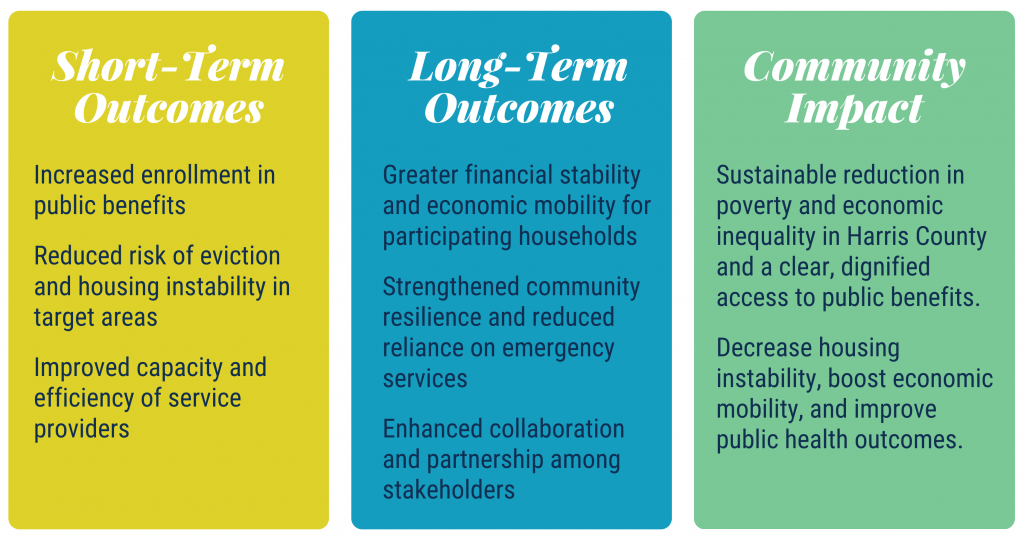
Although Connective’s solution to the underutilization of public benefits is new to the Houston area, the idea is not a new model and has been successfully implemented in other major cities. Benefits Data Trust (BDT), a Philadelphia-based nonprofit founded in 2005, used three strategies to streamline access to benefits: Data-driven outreach to identify low-income individuals, partnerships with government agencies and nonprofits to streamline access, and new technologies to effectively and efficiently assess eligibility. A 2022 profile found that BDT helped over 1 million households in the seven states it served, accessing more than $7.5 billion in public benefits since its inception. While BDT abruptly ceased operations in 2024 due to financial strain, they paved the way to improving access to public benefits.
BenePhilly, the first program launched by BDT in partnership with the City of Philadelphia in 2008, is still operational today using the technology developed by BDT. The program consists of a network of government agencies, nonprofits, and community-based organizations that help connect eligible Philadelphia residents with up to 29 different benefits. This is done using data-driven outreach, referrals from a network of organizations, and in-person and telephone application assistance. A 2022 case study of BenePhilly found that as of January 2021, the program helped more than 125,000 Philadelphia residents secure over $1.6 billion in benefits.
Creating Opportunities for Upward Mobility
Accessing public benefits has a significant impact on reducing poverty and promoting economic mobility. These benefits provide financial stability, allowing individuals to invest in opportunities, like education, skills training, and stable employment, that enhance their chances of upward mobility. The historic decline in poverty during the COVID-19 pandemic demonstrated their effectiveness in reducing the poverty rates, while the increase after these expanded benefits ended highlights their necessity. Concerns like the “benefits cliff” exist, but policy improvements such as a gradual phase-out and standardizing eligibility can address these issues.
Through accessing public benefits alone does not create economic mobility, it is one component of a broader strategy needed to break cycles of intergenerational poverty and create economic mobility. Certainly, for the children living in very low-income families, public benefits can reduce hunger, housing instability, and toxic stress that undermines a child’s ability to learn and thrive. Still, long-term answers lie in investing in fundamental building blocks of economic mobility—ensuring access to affordable care and learning environments for children, high-quality education and workforce training, stable employment that pays a living wage, affordable housing in supportive neighborhoods, and accessible health care.
Support Connective’s Public Benefits Hub and help advance upward mobility for Houston-area residents. Sign up for Connective’s newsletter or donate today—you can make a lasting impact!
Appendix A: Types of Public Benefits
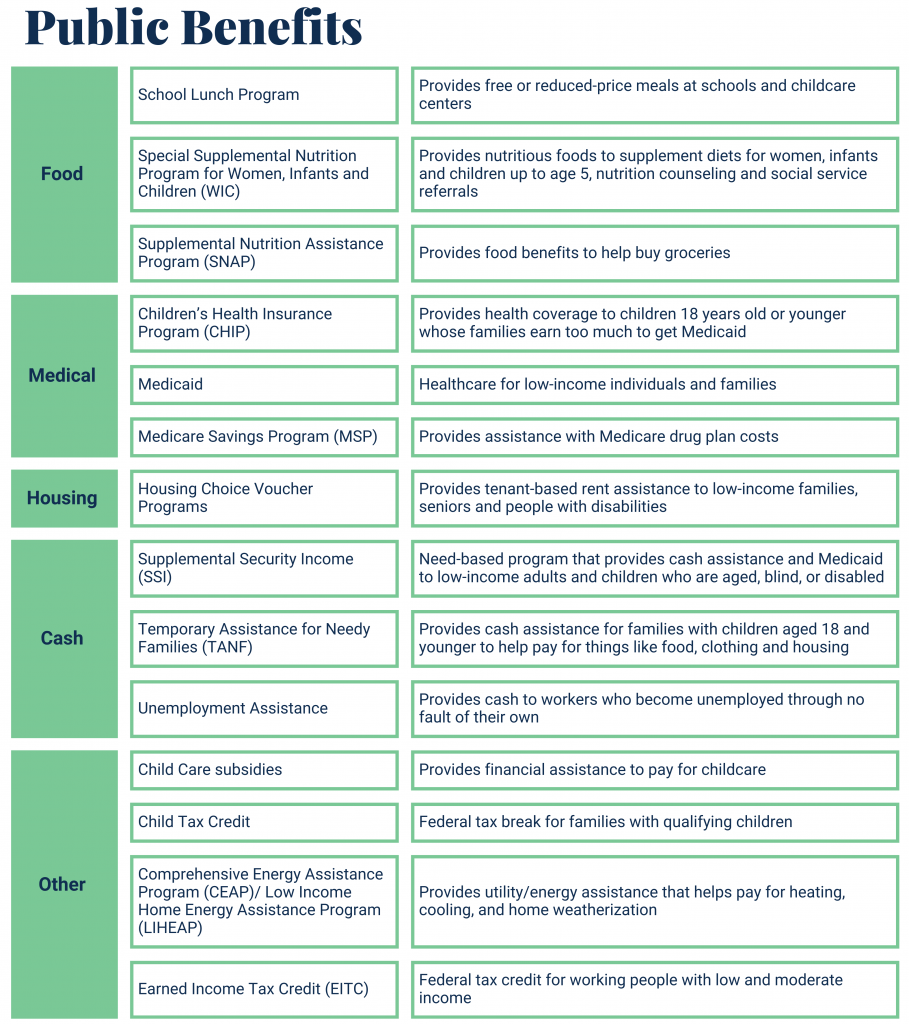
The selection process for the High-Impact Grantmaking initiative incorporated a robust multi-level review process designed to ensure maximum fairness, transparency, and comprehensiveness in evaluating all submissions. The outcome of this process reflects the recommendations made by an independent Community Grants Advisory Committee. The recommendations put forth by the Committee were closely reviewed and approved by the Foundation’s Community Impact Committee and its Governing Board.
